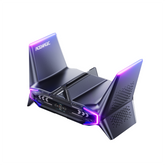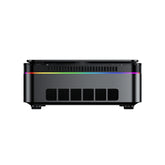What is VGA? A Comprehensive Guide to Video Graphics Array

Understanding the Basics of VGA (Video Graphics Array)
VGA, short for Video Graphics Array, is one of the earliest and most influential display standards in personal computing. It defines both a hardware interface and a video transmission protocol, enabling communication between a computer’s graphics card and a display. Despite the shift to digital standards such as DVI and HDMI, VGA remains relevant in many legacy systems due to its reliability and broad compatibility.
VGA operates as an analog video interface, transmitting red, green, and blue (RGB) signals through a 15-pin connector. Each signal carries varying voltage levels that correspond to pixel brightness on the screen. The standard also includes synchronization signals that control the refresh rate and image stability.
Defining VGA: More Than Just a Blue Port
VGA represents both a video display standard and a physical connector. When IBM introduced VGA in 1987, it defined a specific set of resolutions, color depths, and timing standards for computer displays. Over time, “VGA” became synonymous with the distinctive blue 15-pin D-sub port, now recognized worldwide.
In essence:
- As a display standard, VGA determines how images are generated and transmitted.
- As a connector, it provides the physical interface for transferring analog video signals.
This dual role made VGA a cornerstone of display technology in the late 20th century, bridging the gap between early monochrome displays and the rich color graphics we see today.
Key Characteristics of the VGA Standard
VGA introduced a level of visual fidelity that shaped modern PC graphics. The following points summarize its key traits:
- Analog Signal Transmission: VGA uses continuous voltage levels to represent color intensity, unlike digital formats that use discrete binary data.
- The Iconic 15-Pin Connector: The standard connector features three rows of five pins, each assigned to transmit RGB signals, synchronization data, or ground connections.
- Original Resolution and Color Support: The initial VGA specification supported 640×480 pixels with 16 colors or 320×200 pixels with 256 colors. Later variations expanded these limits significantly.
These characteristics established VGA as a flexible and widely compatible standard for both consumer and professional use.
How VGA Works: From Graphics Card to Screen
VGA’s analog signal process converts digital image data from the computer into varying electrical voltages. Each voltage level corresponds to a specific color intensity, allowing the monitor to reconstruct the image pixel by pixel.
This system depends on precise timing signals to synchronize the display’s refresh cycle with the graphics card’s output.
The Step-by-Step Signal Path
- Graphics Card Generates RGB Signals: The GPU processes digital image data and outputs analog red, green, and blue voltages.
- Signals and Sync Data Travel Through the Cable: The VGA cable carries these analog signals along with horizontal and vertical synchronization pulses.
- Monitor Interprets the Signals: The display converts analog voltages back into visible pixels.
- Sync Signals Maintain Image Stability: These pulses control how each line and frame is drawn to prevent distortion or tearing.
This continuous transmission process repeats many times per second, producing a stable, full-motion image on the screen.
Why Analog Signals Degrade Over Distance
VGA signals weaken when transmitted over long cables. Analog voltages are susceptible to electromagnetic interference and signal loss, which can cause blurriness, color distortion, or ghosting on the display.
For short distances under 5 meters, most users will not notice degradation. However, beyond 10 meters, noticeable quality loss often occurs unless a high-quality shielded cable or signal booster is used.
This limitation was a major reason for the transition to digital interfaces, where data integrity is maintained regardless of cable length within reasonable limits
The History and Evolution of VGA
1987: IBM’s Introduction of the PS/2
VGA debuted with IBM’s PS/2 series, offering a native resolution of 640×480 pixels and 16 colors. This was a major step forward in usability and clarity.
1989: The Birth of “Super VGA” (SVGA)
Third-party manufacturers extended the standard, increasing resolutions to 800×600 and beyond. “SVGA” became the informal name for these enhanced implementations.
1990s: Becoming the PC Standard
Throughout the 1990s, VGA was included in nearly all PCs and monitors. Operating systems and graphics cards were designed with VGA compatibility in mind.
2000s: The Emergence of Mini-VGA Connectors
Compact devices such as laptops adopted Mini-VGA, a smaller connector offering the same functionality but reduced physical size.
2010s–Present: A Legacy Connector
As DVI, HDMI, and DisplayPort became dominant, VGA transitioned into a legacy interface. It remains in use for projectors, industrial systems, and older hardware that still depends on analog displays.
VGA Specifications: A Technical Deep Dive
VGA defines both the video signal format and the physical connector used to transmit analog display data. Over time, its capabilities expanded beyond the original IBM specification, adapting to higher resolutions and color depths while maintaining backward compatibility.
VGA Resolution, Refresh Rate, and Color Depth
VGA’s original specification supported 640×480 pixels at 60 Hz, with 16 colors displayed simultaneously from a palette of 262,144. Later implementations, often labeled “Super VGA” (SVGA), extended these parameters significantly.
The table below summarizes common configurations found across VGA generations:
| VGA Type | Resolution | Refresh Rate | Color Depth |
|---|---|---|---|
| Standard VGA (1987) | 640×480 | 60 Hz | 16 colors |
| Extended VGA (XGA) | 800×600 | 60–75 Hz | 256 colors |
| Super VGA (SVGA) | 1024×768 | 60–75 Hz | 16-bit (65k colors) |
| Enhanced VGA (EVGA) | 1280×1024 | 60 Hz | 24-bit (True Color) |
| Ultra VGA (UXGA) | 1600×1200 | 60 Hz | 24-bit (True Color) |
| QXGA (Advanced) | 2048×1536 | 60 Hz | 24-bit (True Color) |
Resolution Capabilities: From 640×480 to 2048×1536
The VGA standard was designed with flexibility in timing and signal interpretation. As display hardware evolved, manufacturers pushed resolutions well beyond IBM’s original specification.
By the late 2000s, high-quality VGA cables and monitors could reliably display up to 2048×1536 pixels. However, such performance depended heavily on cable quality and signal integrity, as analog transmission can distort at higher frequencies.
Color Depth: From 16 Colors to 24-Bit True Color
Color rendering in VGA evolved alongside graphics hardware. Early VGA modes used 4-bit color (16 hues), while later systems adopted 8-bit (256 colors) or 24-bit (16.7 million colors) configurations.
This progression allowed smoother gradients and lifelike imagery, though analog noise sometimes reduced visible precision compared with digital interfaces.
The 15-Pin VGA Connector Explained
The VGA connector is a DE-15 (commonly called DB-15) interface arranged in three rows of five pins. It carries analog RGB signals and synchronization pulses between a graphics card and a monitor.
Pinout and Functionality
Each pin has a specific role in transmitting video information. The table below lists standard VGA pin assignments:
| Pin | Function | Description |
|---|---|---|
| 1 | Red video | Analog red color signal |
| 2 | Green video | Analog green color signal |
| 3 | Blue video | Analog blue color signal |
| 4 | ID2 / NC | Monitor ID or not connected |
| 5 | Ground | Signal return |
| 6 | Red return | Ground for red signal |
| 7 | Green return | Ground for green signal |
| 8 | Blue return | Ground for blue signal |
| 9 | +5 V (optional) | Power for display detection |
| 10 | Sync ground | Common ground for sync |
| 11 | ID0 / NC | Monitor ID or not connected |
| 12 | ID1 / SDA | Monitor ID or data channel |
| 13 | Horizontal sync | Line synchronization pulse |
| 14 | Vertical sync | Frame synchronization pulse |
| 15 | SCL | Data clock or ID function |
Standard VGA vs. Mini-VGA Connectors
| Feature | Standard VGA | Mini-VGA |
|---|---|---|
| Physical Size | Full-size 15-pin D-sub | Smaller proprietary design |
| Used In | Desktops, monitors, projectors | Laptops, compact systems |
| Compatibility | Universal, widely available | Requires adapter |
| Signal Type | Analog RGB | Analog RGB (same format) |
Mini-VGA served as a compact variant for space-limited devices. Though identical in signal type, it required manufacturer-specific adapters to connect to standard VGA cables.
VGA vs. DVI: Analog Champion vs. Digital Successor
The transition from VGA (Video Graphics Array) to DVI (Digital Visual Interface) marked a major shift in display technology. Both serve the same purpose — connecting a computer to a display — but they differ fundamentally in signal type, image quality, and supported resolution.
This section provides a clear technical comparison to help readers understand where each interface fits in today’s environment.
Head-to-Head Comparison
| Feature | VGA | DVI |
|---|---|---|
| Signal Type | Analog RGB | Digital (DVI-D) or Hybrid (DVI-I) |
| Introduced | 1987 (IBM) | 1999 (Digital Display Working Group) |
| Connector Type | 15-pin D-sub | 24/29-pin (DVI-D / DVI-I / DVI-A) |
| Maximum Resolution | Up to 2048×1536 (dependent on cable quality) | Up to 2560×1600 (dual-link DVI) |
| Image Quality | Degrades with distance or interference | Maintains signal integrity over distance |
| Color Accuracy | Subject to analog noise | Pixel-perfect digital reproduction |
| Audio Transmission | Not supported | Not supported (video only) |
| Common Usage | Older monitors, projectors | LCD monitors, early HDTVs |
| Cable Length (Optimal) | < 5 meters for best quality | Up to 10 meters without loss |
Key Differentiators to Consider
- Signal Format: VGA uses analog voltage levels to represent color intensity, while DVI transmits binary data. The digital nature of DVI eliminates signal distortion and maintains consistent image clarity.
- Image Quality: VGA signals may appear slightly blurred or faded on modern high-resolution displays, especially when cable quality is poor. DVI maintains sharper edges and more precise color gradients.
- Resolution and Bandwidth: DVI supports higher resolutions and refresh rates, particularly in dual-link configurations. VGA performance depends on cable shielding and signal strength.
- Compatibility: VGA ports are still found on projectors and older monitors, while DVI remains common on legacy LCDs and some graphics cards. Adapters exist for VGA-to-DVI-A or DVI-I, but image quality remains analog.
- Audio Capability: Both standards transmit video only. Separate audio cables are required for sound.
Usage, Adapters, and Converters
Although VGA is an older standard, it remains in use across offices, schools, and industrial systems. Many projectors, monitors, and embedded devices still include VGA ports for compatibility.
Its long lifespan is due to three main factors: hardware stability, low cost, and broad interoperability. However, with digital connections like HDMI and DisplayPort dominating modern devices, VGA now functions primarily as a legacy solution for existing infrastructure.
Advantages: Why VGA Endures
- Widespread Compatibility: Nearly every PC and projector manufactured before 2015 supports VGA, making it a dependable fallback for presentations or system maintenance.
- Low Cost: VGA cables and adapters are inexpensive, available in most electronic stores, and easy to replace.
- Robust Design: The 15-pin D-sub connector is mechanically strong and secure, which reduces accidental disconnection.
- Adequate Quality for Basic Tasks: For text display, standard-definition video, and non-critical visuals, VGA still performs adequately.
Disadvantages: The Limitations of an Analog Interface
- Signal Interference: Analog transmission is vulnerable to electromagnetic noise, resulting in flicker or color distortion.
- Resolution Limitations: High resolutions (above 1080p) may appear blurred or unstable, depending on cable quality and length.
- No Audio Transmission: VGA carries only video; audio requires a separate 3.5 mm or RCA connection.
- Large Connector Size: The D-sub plug is bulky compared with compact digital interfaces such as HDMI or USB-C.
These drawbacks limit VGA’s use to legacy systems rather than new installations.
Choosing the Right VGA Cable
A VGA cable transmits analog RGB and synchronization signals between devices. Selecting the correct cable depends on the setup:
| Cable Type | Description | Use Case |
|---|---|---|
| Standard VGA (Male-to-Male) | Connects PC to monitor or projector | General-purpose connection |
| VGA Splitter Cable | Duplicates video output to two displays | Presentations or mirrored displays |
| Shielded High-Quality VGA Cable | Reduces noise over long distances | Professional or industrial use |
Cables longer than 5 meters should use double shielding or ferrite cores to minimize interference.
FAQ
What is the maximum resolution a VGA cable can support?
Standard VGA was defined at 640×480 pixels, but improvements in cable design and graphics hardware allow resolutions up to 1920×1080 or 2048×1536.
However, signal quality depends on cable length, shielding, and graphics card output strength. Long or low-quality cables may cause blurriness or ghosting at high resolutions.
Can a VGA cable transmit audio?
No. VGA is a video-only standard.
It does not include audio channels. For sound output, a separate connection — such as a 3.5 mm stereo jack or RCA audio cable — must be used alongside VGA.
How do I connect a VGA computer to an HDMI monitor?
You need an active VGA-to-HDMI converter.
This device converts the analog VGA signal into a digital HDMI format. A simple passive cable will not work because VGA and HDMI use different signal types.
Many active converters also include an audio input, allowing both video and sound to be transmitted through a single HDMI output.
Is there a difference in quality between VGA cables?
Yes. VGA quality varies significantly with build materials and shielding.
High-quality cables with coaxial insulation and ferrite cores reduce interference, keeping images clearer over longer distances.
For best results, avoid unshielded or very thin VGA cables when using resolutions above 1080p or lengths over 5 meters.
How do I connect two monitors using VGA?
You can connect two VGA displays in two ways:
- Dual VGA outputs on a graphics card — allows independent display control.
- VGA splitter cable — duplicates the same image on both screens.
A splitter cannot extend your desktop; it only mirrors the signal. For dual independent displays, the graphics card must support multiple video outputs.
Why is my VGA display blurry?
Blurriness often results from signal degradation or incorrect resolution settings.
Check the following:
- Use a shorter, shielded VGA cable.
- Set your computer to the monitor’s native resolution.
- Avoid using adapters or converters unless necessary.
Interference from nearby electrical devices can also affect clarity on analog connections.
Can VGA support HD video?
Yes, but with limitations. VGA can display 720p or 1080p video if the cable and devices maintain signal integrity. However, compared with digital standards, VGA may show reduced sharpness or slight color inaccuracies, especially on large screens.
Is VGA still used in 2025?
Yes, though rarely in new products. VGA remains in use for:
- Legacy projectors and older monitors
- Industrial and embedded systems
- Basic office and educational setups
Manufacturers have largely replaced VGA with HDMI and DisplayPort, but the standard persists because of its simplicity and cost efficiency.
Conclusion
VGA’s simplicity, low cost, and universal compatibility made it the default interface for millions of computers worldwide. Although newer standards such as HDMI and DisplayPort now dominate, VGA still serves an important role in legacy systems, education, and industrial environments where long-term reliability matters.








Leave a comment
Please note, comments need to be approved before they are published.